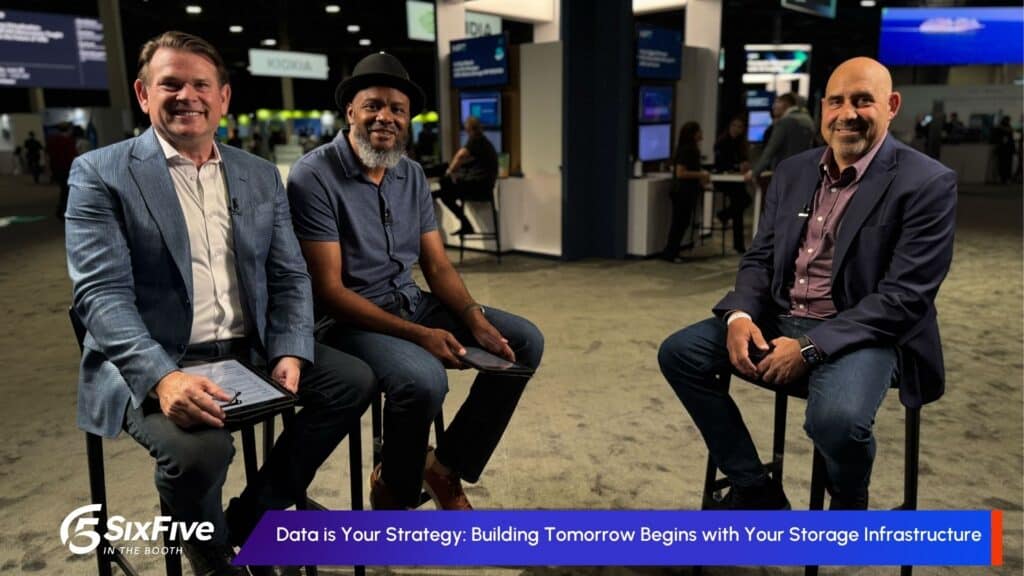The News: Oracle announced the general availability of Exadata Exascale, an intelligent data architecture for the cloud designed to provide performance improvements for all Oracle Database workloads, including analytics, processing, and transactions, at any scale. Read the full press release on the Oracle website.
Oracle Exadata Exascale: Making Data Architecture for Cloud Intelligent
Analyst Take: Oracle unveils Exadata Exascale aimed at reducing costs for organizations of any size to take advantage of Oracle Exadata’s built-in performance, reliability, availability, and security capabilities. Exadata Exascale is now available with the Exadata Database Service on Exascale Infrastructure and Oracle Database 23ai on Oracle Cloud Infrastructure (OCI). It will be available in Exadata Cloud@Customer, OCI Dedicated Region, and multicloud environments in the future.
Exascale Exadata Diversifies and Expands Cloud Benefits Across Intelligent Data Architecture
Exadata Exascale provides a new approach for customers to use Exadata Cloud Infrastructure. It provides users with an intelligent data architecture that consists of virtualized database-optimized infrastructure on pools of shared compute and storage, which can enable hyper-elastic scaling and pay-per-use economics. As such, organizations of any size can use the Exadata database platform to catalyze innovation for key data workloads starting at hundreds of dollars per month.
The key highlights of the new Exadata Exascale offering include:
- Intelligent AI: Exascale uses AI Smart Scan, a way to offload data and compute-intensive AI Vector Search operations to the Exascale intelligent storage cloud. AI Smart Scan and Exadata System Software 24ai run key vector search operations up to 30x faster, enabling customers to run thousands of concurrent AI vector searches in multi-user environments.
- Intelligent Storage Cloud: With Exascale, Oracle delivers RDMA-capable storage cloud that distributes databases across all available storage servers and uses data aware, intelligent Smart Scan to make thousands of CPU cores available to speed up any database query. Plus, data is replicated on three different storage servers to provide high levels of fault tolerance.
- Elastic, Pay-Per-Use Resources: With Exascale, resources are elastic and pay-per-use, with no extra charge for input/output operations per second (IOPS).
- Intelligent OLTP: Intelligent communication between servers enables high-performance database scaling across the Exascale Virtual Machine clusters, and intelligent, low-latency OLTP IO quickly completes mission-critical transactions and supports more concurrent users.
- Intelligent Analytics: Data intelligence automatically offloads data-intensive SQL queries to the Exascale intelligent storage cloud, enabling enhanced throughput scaling for analytics.
- Database-aware Intelligent Clones: Users can instantly create full copies or thin clones using the Exascale intelligent storage cloud and its redirect-on-write technology. Advanced snapshot capabilities make creating space-efficient clones of pluggable or container databases easy using read-write sources.
Exadata Exascale Unleashes New Storage Capabilities
From my viewpoint, Exadata Exascale is delivering clear-cut improvements across storage for customers. Previously, each cloud tenant had a dedicated Exadata compute and storage server with ASM (Automatic Storage Management) used to distribute storage across databases.
Now they can use a common pool of Exascale compute and storage resources that support thousands of tenants and millions of databases. This means resources are entirely elastic and pay-per-use as tenants specify only the cores and storage they need, including starting with only a few cores. The Exascale control plane spreads every database across dozens of pooled storage servers resulting in a shared pool of Exascale servers that leverages thousands of CPUs for any database query.
Currently, mainstream cloud storage is elastic; however, many users are beleaguered by performance limitations imposed by its multi-tier architecture. Specifically, storage is exposed as logical unit numbers (LUNs) within a virtual machine (VM) as standard block I/O protocols are used. The load balancer tier routes LUN I/Os to metadata servers with the storage metadata tier managing LUN distribution and mirroring that enable the storage tier to hold data, often enlisting more tiers with every tier subsequently adding latency and bottlenecks.
Key to why I see Exadata Exascale providing sharp differentiation is that it ushers in a new loosely coupled architecture that brings the power of Remote Direct Memory Access (RDMA) and SQL offload to cloud data. Critically, Exascale removes the need for intermediate tiers. How? Oracle Database 23ai sends intelligent data requests directly to pooled Exascale storage servers taking advantage of the direct I/O architecture that uses no intermediate nodes. This is much faster and is required by RDMA. Also, RDMAs are implemented in hardware enabling microseconds of latency and millions of I/Os per second of throughput.
Exascale is pointedly distinguished by optimizing storage capacity in addition to performance. This is achieved as Exascale Storage Cloud intelligently moves hot data from disk to memory or flash, delivering the performance of dynamic random-access memory (DRAM), the IOPs of flash, and the capacity of disks.
Moreover, Exascale manages the data as a large pool of Database extents by storing databases as a set of 8 MB extents. 8 MB extents are large enough to achieve good sequential performance when scanning contiguous data alongside being small enough to allow a database to be distributed across many disks in the storage cloud to distribute I/O load.
Each extent is assigned to a storage bucket using a hash function. That way multiple extents can hash to a storage bucket. A mapping table tracks the drives each storage bucket is currently stored on. As such, all extents that hash to a storage bucket are stored redundantly on three drives that are on three separate storage servers to protect from storage failures and outages.
The number of storage buckets is fixed (e.g., 100K). Accordingly, 100K storage buckets are large enough to spread data across thousands of storage servers while 100K is small enough to keep the mapping table cached in the client database server’s DRAM. If a database grows, or more databases or storage servers are added, then more extents hash to existing storage buckets. This way, the mapping table does not grow, ensuring that data scales without scaling metadata.
Caching the mapping table enables RDMA from databases directly to storage servers by having each client database cache the mapping table. This results in key benefits such as allowing the database to send I/Os directly to storage servers, resulting in the direct I/O architecture with no intermediary nodes, and is much faster.
Plus, stale cached mapping tables are tolerated and refreshed on demand. As a result, there is no need for distributed locking when data is redistributed across servers. If a client database sends I/O to the wrong storage server due to a stale cache, the storage server requests the I/O and then tells the database to refresh the stale mapping table. This results in the key outcome of the loosely coupled architecture assuring hyperscale properties.
Moreover, unique RDMA-enabled cloud block volumes deliver low latency and high throughput for conventional block I/O by providing extreme performance I/O for Oracle automatic storage management cluster file system (ACFS) and Linux file systems. This enables VM images to reside on intelligent shared storage providing the foundation for live migration of RDMA-capable VMs. This results in providing high-performance space-efficient volume snapshots and clones for data on file systems in addition to data in databases.
Exadata Exascale: Assuring Mission Critical AI at Any Scale
From my perspective, the acceleration of AI Vector Search on Exadata Exascale is a key differentiator. Now Oracle’s AI Vector Search can be transparently offloaded to smart Exascale storage for faster search.
Oracle’s AI vector search can be transparently offloaded to smart Exascale storage for faster search. Vector search queries are automatically parallelized across the Exascale storage cloud. Each storage server independently computes the top-K matches with the database merging results. The capability works transparently on Exadata, resulting in up to 30x faster AI vector queries as well as supporting multi-user environments with the ability to offload thousands of concurrent AI vector searches.
Exadata Exascale: Database Aware Intelligent Clones
Exascale can instantly create database (or PDB) clones for development or test requirements. This includes providing either a full copy of thin clones created from an existing snapshot or a live PDB. This entails no upstream dependencies or no “read-only” test master limitations. Clones use Exadata redirect-on-write technology so that the clone shares the block with the parent until they make a change. This drastically decreases storage capacity demands for cloning, assuring users get Exadata native performance on development, test, or recovery copies.
Plus, Exascale provides scalable distributed clones. When a database tells storage servers to create a new clone, each storage server starts redirecting to the snapshotted data that results in fast, space-efficient, minimal copies. As a result, distributed local clones are executed at the hyperscale level.
Exadata Exascale Body Slams the Competition on I/O Performance
From my perspective, Oracle consistently demonstrates the competitive advantages of its cloud database portfolio offerings and Exadata Exascale is no exception. For instance, Oracle is sharing that Exascale delivers 50x lower latency, with 17 microseconds compared to 1,000 microseconds for other cloud providers.

In addition, Exadata Exascale delivers 230x more throughput than other database cloud services—2,880 GB/s compared to up to 21 GB/s for other hyperscalers.

Exadata Database Service on Exascale Infrastructure: Key Benefits
Exadata Database Service on Exascale Infrastructure provides the same database automation available as the current Exadata Database Service. The most visible differences consist of tenants only seeing databases and VM clusters rendering the cloud of physical servers as invisible to tenants. Plus, Linux VM images are stored on the network-attached Exascale intelligent block storage, which removes size limitations of local drives.
Moreover, Exascale storage virtualization is fully automated by Exascale Cloud Control Plane enabling customers to allocate and pay for only the storage capacity they need for their databases. The bottom line is that customers avoid paying for IOPs. Notably, Oracle plans live VM migration while performing RDMA I/O to storage and other VMs. This can avoid database disruption during cloud infrastructure software updates. One important outcome is that now all Exadata benefits are available for small workloads and small businesses.
Key Takeaways: Oracle Exadata Exascale Assures Intelligent Data Architecture for Cloud
Overall, I believe that Exascale unites the best of Exadata with the best of the cloud. The result is the world’s only intelligent, mission-critical data architecture for cloud. Customers get a highly-performant, economical infrastructure for their Oracle databases with hyper-elastic resources. Oracle Exascale greatly expands its market reach as the low cost now makes Exadata attractive to small organizations and the low entry configuration makes small workloads affordable to everyone. It’s a win-win for both, powered by amazing technologies such as RDMA for low latency and high throughput.
Disclosure: The Futurum Group is a research and advisory firm that engages or has engaged in research, analysis, and advisory services with many technology companies, including those mentioned in this article. The author does not hold any equity positions with any company mentioned in this article.
Analysis and opinions expressed herein are specific to the analyst individually and data and other information that might have been provided for validation, not those of The Futurum Group as a whole.
Other Insights from The Futurum Group:
Oracle Database 23ai: Taking Enterprise AI to the Next Level
Oracle, Microsoft, and OpenAI Form GenAI Power Trio
Oracle Fiscal 2024 Q4 & Full-Year: Cloud and GenAI Uplift Results
Author Information
Ron is an experienced, customer-focused research expert and analyst, with over 20 years of experience in the digital and IT transformation markets, working with businesses to drive consistent revenue and sales growth.
He is a recognized authority at tracking the evolution of and identifying the key disruptive trends within the service enablement ecosystem, including a wide range of topics across software and services, infrastructure, 5G communications, Internet of Things (IoT), Artificial Intelligence (AI), analytics, security, cloud computing, revenue management, and regulatory issues.
Prior to his work with The Futurum Group, Ron worked with GlobalData Technology creating syndicated and custom research across a wide variety of technical fields. His work with Current Analysis focused on the broadband and service provider infrastructure markets.
Ron holds a Master of Arts in Public Policy from University of Nevada — Las Vegas and a Bachelor of Arts in political science/government from William and Mary.





